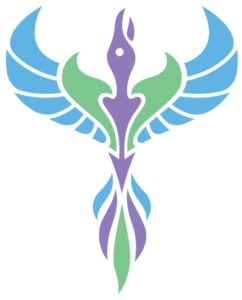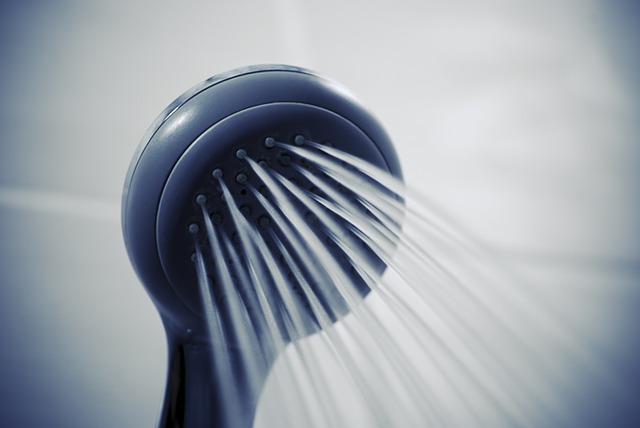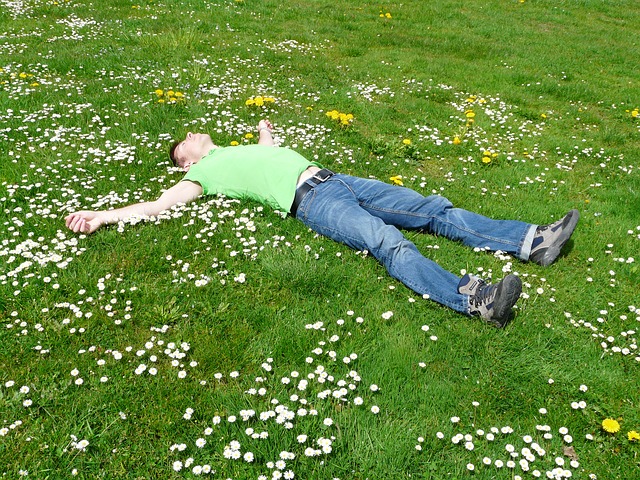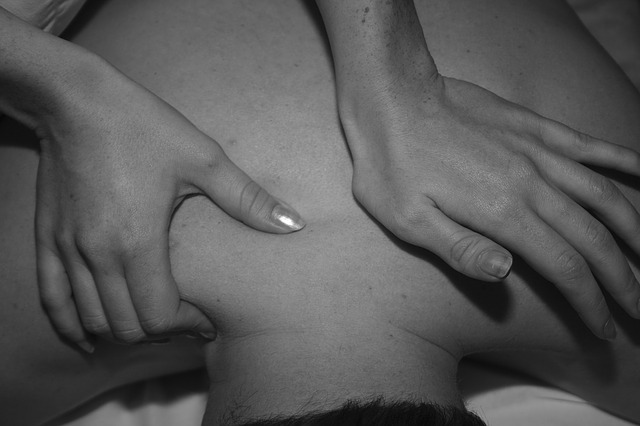Posts by Karen
Stretching in the Shower: An Excellent Idea
Why shower and stretch?
The shower is as good a place as any to have a stretch. It has the advantage of being a calming environment and, as the hot water cascades down on your weary muscles, why not turn up the relaxation one more notch by throwing in a couple of simple stretches? A few things to keep in mind: focus on being mindful by breathing deeply and avoid letting yourself become too dizzy; make sure you are properly hydrated and that the water temperature is set comfortably. Cool water has a tendency to tighten mussels while warmer water tends to loosen them.
A few shower-worthy stretches
- The clasped-neck stretch: Clasp two hands on the crown of your head and gently lower your head down toward your chest, effecting a double chin. Hold for 5-10 deep breaths.
- Release the shoulders: stand as upright as possible and squeeze your shoulders together. Hold 3 deep breaths, release and repeat. To add to the stretch and open up your chest cavity further, spread out your arms behind you as you squeeze.
- The back-bend: Stand upright, place your hands on your lower back/upper buttocks with fingers pointing upward and arch your back. Hold 5-10 deep breaths, release and repeat.
Warm water and stretching both have the advantage of releasing your muscles from tension. After a shower and a stretch, your body will be at one of its most relaxed points possible during the day. By practicing deep breathing, you are also calming the mind. This makes the shower and stretch combination a powerful tool for people who have difficulty falling asleep.
Stretching (and showering) is an integral part of our wellness plan
We believe that starting with 10 minutes of dedicated stretching a day can set you on a path toward doing great things for your body. Always stretch where you feel most comfortable- for some people this is in public, for others it is in the shower. Find your happy place and stretch it out! If you need help addressing long-standing muscle tension, back pain or nerve dysfunction related to subluxation, give our office a call to schedule an appointment today.
Study Finds Cannabis Compounds Prevent Infection By Covid-19 Virus
Our science research dollars are not just up in smoke this time. The medical community seems to have found another tool to fight the spread of COVID-19. Researchers at Oregon State University have published a report that claims, “Cannabinoids Block Cellular Entry of SARS-CoV-2 and the Emerging Variants.”
I’m sure more research will be needed and getting volunteers will be easy. If this is true the Cannabinoids industry will be having be having some fun with this new information. You can read a quick summery on the Forbs website linked here:
It looks like even the Variants can’t get past the has barrier. “Although further research is needed, van Breemen noted that study shows the cannabinoids could be developed into drugs to prevent or treat Covid-19.”
So for a bit of fun, when the office asks how high are you? You can say back, “no man, It’s Hi how are you! I did my research on the internet and now I’m fighting the pandemic.” And blow some cure in his face. Or maybe let your doctor prescribe it first.
Did you party too hard on New Years? Find the Sleep you Deserve
Finding it hard to stay asleep?
The sounds of the city can make falling asleep difficult enough, but many people struggle to stay asleep because of their sensitivity to noise. It is easy to be a deep sleeper- the kind who sleeps through smoke alarms- when you are young, but as we get older, we succumb to external and internal factors that make it difficult to maintain a healthy, restful level of sleep. While genetics and the possibility of a sleep disorder are also at play, there are many things you can do with your lifestyle to limit the incursions of noise in your sleep life.
Training yourself to become a deeper sleeper
The first key is setting yourself up for success: this means limiting factors that are antagonistic from the inside of your body. Alcohol, while sedative by nature, does not let you achieve deep restful sleep and once its effects wear off, you often find yourself awake and uncomfortable. Likewise, caffeine has large effects on your sleep, where the effects can be felt up to 8 hours after consumption. One final factor that may be preventing you from sleeping is the presence of screens before bed- the blue light that emits from your cell phone has been shown to interfere with the feeling of tiredness that eventually leads to sleep.
What else can I do to stay asleep?
- Melatonin, a natural chemical that is produced by the brain to influence sleepiness, can be purchased over-the-counter at your local pharmacy. Giving your melatonin levels a boost helps to encourage sleep.
- Magnesium and calcium supplements: the two combined have been shown to effectively treat insomnia.
- Control your sleep environment: keep it dark and cool. The cave-like sensation helps to switch off the brain- but don’t worry you can stay warm and happy underneath the sheets.
- White noise: something that many people do to regulate the many noises of the night. People use different white noise simulators- rainfall, river or rainforest are all popular options.
Is pain stopping you from sleeping?
Pain is another factor that prevents people from falling and staying asleep. If you have pain in your back or tight, tense muscles, they could be the main reason that you are not finding the sleep you need. Give our office a call to get to the root of the pain and create a plan for rehabilitation today.
Make 2022 the Year of Preventative Health
Health is trending for 2022
What is more important than your health in 2022? Trending aside, this new year is awash with possibilites for improving your health on a holistic scale. At our office we are concerned with two parts of holistic wellness:
- Preventative Healthcare
- Musculoskeletal Medicine
We focus on using natural modalities to improve your body’s innate capacity for healing, to help you look, feel and function better at any age. The truth is, musculoskeletal disorders are on the rise in the USA. From an aging society, to more jobs shifting into sedentary settings, the odds are more stacked against us than ever when it comes to taking care of our physical health. No matter how you look at it, there is simply no excuse for not taking better care of yourself this new year.
Preventative Healthcare
We believe that spinal health is the foundation for overall wellness. Many of our patients have been living for years without the proper amount of awareness and knowledge necessary to make improvements in their spinal health. This has left them in the throes of back pain and spinal degeneration which then affects all other parts of their life. We respond by providing every new partient with a comprehensive physical examination that includes the patient’s medical history, a musculoskeletal evaluation and static postural analysis. This allows us to identify shortcomings in musculoskeletal health including spinal misalignment, nerve dysfunction and postural weakness. From here we tailor an individual plan that will help you reduce pain, improve function and prevent future illness and injury.
Making your health a priority this new year
Don’t wait for your health problems to catch up to you! It’s time to stop ignoring the factors in your life which are holding you down. Let’s work together to design a solution that will help you feel like your best You this new year.
Merry Christmas from a Concerned Chiropractor
Christmas has a way of hampering people’s fitness progress
Nowhere is this more evident than in our spines! The most important things we can do for our spines are:
- Maintain a healthy weight
- Maintain a reasonable level of activity
- Avoid inflammation
- Practice good posture
The holiday season puts all of this in jeopardy; studies show that activity levels among the population reach their lowest during December. Add in the fact that we tend to eat more food and you have a formula for weight gain and back pain that few of us can afford. The final picture is of someone relaxing on the couch, posture unsupported, wincing from back pain inside while they outwardly smile. If this is you, read on to find out how we can help you use the positive energy of the holiday season to effect powerful changes in your spinal health.
Pain is no one’s idea of a good time
We are in the business of helping you face down your back pain. The first step of any solution is to identify your particular risk factors. Are you prone to overeating? Do you overindulge in the punch, then find yourself sprawled on the couch? Do you feel extra sluggish during the holiday period? All of these things are hard on your spine. Weight gain causes extra pressure on the spine; alcohol contributes to inflammation; and inactivity allows for tension to accumulate in your muscles, pulling your spine out of alignment. If you struggle with chronic back pain, you need to be proactive about the health of your spine this holiday season.
Doing something about back pain this holiday season
You have the power! Watch what you eat and drink, and take every opportunity to get up and move. Give our office a call to schedule an appointment before, during, or after the holiday season. Let’s make this the last holiday where your back pain has a prominent seat at the table with the rest of your family.
Spinal Traction: Is it Right for You?
Why does spinal decompression feel so good?
Spinal traction is a type of decompression therapy that we provide that is designed to relieve pressure on the spine. Through our everyday activities, we submit our spines to compressive forces that move vertebrae out of alignment, threaten spinal joints and cause overall degradation. As you get older, these compressive forces compound and lead to more serious conditions including sciatica, herniated discs, degenerative disc disease, and other painful conditions. Spinal traction is designed to combat the compression!
Spinal traction: decompression designed for you!
Gravity is an ever-present force on our spines. And while the best thing for us all to do would be to float in space, the next best thing is spinal traction. In essence, mechanical traction utilizes a specialized table to reverse the compression of your spinal discs. This creates a negative vacuum of space in which discs are able to heal and the spine is able to align itself. People with the following conditions should consider spinal traction as a way to provide relief from their symptoms:
- Bone spurs
- Degenerative disc disease
- Herniated discs
- Slipped discs
- Pinched nerves
Spinal traction is a natural therapy for your spine
This is a non-surgical form of pain relief that comes with very few side effects comparatively. If compressive forces have taken their toll on your spine, we urge you to give our office a call and find out how spinal traction and its decompressive therapy can help you feel less pain today.
Holiday Health Objective: Don’t Let the Food Derail your Fitness Plan
Holiday foods are filled with inflammation-causing agents
This might not be what you want to hear right before the holiday baking season kicks into full swing. And it certainly doesn’t make for great conversation around the baking table. But if you suffer from back pain, it is worth carrying a dose of awareness with you into each meal. After all, other people can enjoy the fruits of your labor- but abstaining from the majority of inflammatory foods will do your back innumerable benefit.
Keep inflammation out of your holiday plans
Any list of inflammatory foods begins with sugar and saturated fat, staple ingredients of many holiday recipes. Other common Christmas time ingredients that cause inflammation include:
- Refined flour
- Artificial sweeteners
- Alcohol
You may not want to think of the holidays as being inflammatory-filled, but the diet certainly suggests such a trend. Protect yourself this holiday season by thinking about what you put into each recipe; many traditional recipes can be upgraded to anti-inflammatory variants. And you always have the power of choice to say no to another alcoholic beverage or another cupcake!
We are concerned with the health of your spine over holiday foods
They may taste good, but the inflammation that they cause can have your back reeling. Think of every bite as a cost-benefit analysis- if it is actually going to hurt your back, it may be best to abstain. And if you are suffering from inflammation, ice is your best friend! Maintaining range of motion and activity levels are also important ways of combatting inflammation. Unfortunately, the holidays are the time of year we exercise the least. Try to maintain reasonable levels of movement and if you are still struggling with distracting back pain, give our office a call to schedule an appointment. We are standing by to help you with all your spine-related problems this holiday season!
Protect Your Neck, Don’t Neglect Your Neck?
Your neck is a densely packed powerhouse of muscles
However, these muscles are among the most neglected in the body when it comes to gym time, and they rarely come in for attention unless they are causing problems. This is problematic for a number of reasons: first, an increasing number of us work jobs that require us to sit for hours on end, encouraging stiffness and pain in the neck. Second, ignoring the neck can leave you vulnerable to cervical spinal conditions that will develop later from a lack of strength in the supporting muscles and poor posture. I’m not saying you need to train each muscle of the neck individually, but we should treat it as a fairly important group of muscles to be exercised regularly.
The relationship your neck has with pain
Think of how many times you move your neck in a day- it is probably impossible to even get close to an accurate estimate as 90% of neck movements are subconscious. Looking up, down, to the side, and over your shoulder; chewing your food and holding your head upright. Many of the muscles in the neck connect to the upper back and have implications in the mechanics of shoulder movement. What this mosaic shows is that, with weak muscles, your neck is vulnerable to a lot of movements and the worst malefactor is no movement at all.
It’s time to turn your neck into a bundle of strength
At our office in we have a plan to turn your neck into something more: a network of muscles that support the head, connect it to the body with proper mechanics, and allow for an extensive range of movement without causing pain or stiffness. It is important to realize that your neck can actually work as an agent for you- to prevent the onset of spinal conditions and pain related to a desk-heavy lifestyle. Give our office a call to find out how we can start strengthening the neck today.
Holiday Health 101: Tips for Navigating those Laden Dinner Tables
The holiday food coma is a reality that few weight-watchers can afford
Thanks to the healthy quantities of fatty foods that seem to pass into our households each holiday season, keeping the weight down can be a challenge that few of us are equipped to meet. No one who is in a weight loss battle likes to see themselves slumped over on the couch, full of pie and brandy, waiting for the night to mercifully come to an end. Applying a few common-sense principles to each family dinner will ensure that you don’t lose too much ground in the battle to keep the pounds down.
We believe in being realistic with our eating goals during the holidays.
That’s why we came up with these tips for avoiding over-eating, but also not feeling too guilty if you do:
- Don’t guilt-trip yourself: chances are you are going to eat too much and not work out enough. Give yourself a break, but don’t overdo it past an acceptable extreme.
- Don’t be guilt-tripped: just because the recipe is family heirloom doesn’t mean you have to try that pie. But do try it and don’t feel guilt. Roll that wonderful morsel around your taste buds and enjoy, Remember each moment that the sensation of joy rushes through your mind because that is what it is to be alive!
- Monitor your appetizer intake: yes bite-sized appetizers are finger-lickin’ good. But they also burden your calorie counter before the main meal even takes place.
- Tummy tuck constantly: bring your belly button in toward your spine and hold it. This is core-strengthening 101 and it’s dead easy to perform while you’re at the dinner table.
- Avoid drinking too much: it’s not only your dignity that is at stake. Alcoholic drinks, especially those holiday-inspired ones, are laden with calories that contribute to the famous holiday-bloating effect.
Check-in at your chiropractor after the holiday season to ensure you are still on track with your fitness goals
At our office, we help make sure that your holiday habits haven’t taken a drastic toll on your overall health. If you want to keep your body balanced and on track for achieving all your fitness goals, give our office a call to schedule an appointment for after the holiday rush. Good luck and happy holidays!
Landing Softly: How to Minimize Impact on the Runner’s Joints
Good running form means efficiency and speed but it also means injury prevention!
If you are trying to improve your running form, it behooves you to focus on minimizing the impact of each step on the joints of your knees and lower back. Yes, this starts with good running shoes, but the degree to which the impact will affect your joints is determined when you strike the ground.
Running with the health of your spine in mind
- Strike the ground with the middle of your foot rather than the heel: this technique, known as mid-foot running, is the most important stride for minimizing the shock factor to spinal joints.
- Short strides that land directly under the hips also minimize impact and help to keep you upright and balanced.
- Upright posture: slumping forward with the shoulders and craning your neck forward puts the spine out of balance and leaves it vulnerable every time your foot hits the ground. Posture awareness is very important for runners.
This all combines to create a more natural running style that will, in the long run, benefit you greatly. Not only will it prevent injury, but it will also make you a more efficient runner
Keeping the damage in check with regular chiropractic care
No matter how careful you are about your running form, some level of impact is likely to reach your spinal joints. This jarring motion tends to move them out of alignment, creating compression on the nearby nerves which can result in dysfunction and pain. If you are interested in keeping your body in the best shape possible so you can keep running to your heart’s content, give our office a call to schedule an appointment today.










